355 Raising Standards
MAINTAINING STANDARDS
by David Hancock
The need for breed standards, whether in working or show dogs, is greater now than ever before. The standard, or word picture, of any breed, is the guide for newcomers, the protector of breed type and the essence of an anatomy that function once brought to that breed. They are hardly contemporary phenomena; Xenophon two thousand years ago, Gaston de Foix in the 14th century and Dame Juliana Berners in the 15th century, each gave us detailed descriptions of dogs and the physical points that were considered important for field success. Today's Kennel Club breed standards were mostly created and drafted originally, not by show fanciers, but by sportsmen in the late 19th century. These men were amongst the most knowledgeable dog men of any age; they were attempting to ensure that the working physique of emergent breeds was enshrined.
How on earth could the tyro-Kennel Club recognise a gundog breed as such without some description of its appearance? How can you tell a Norwich Terrier from a Norfolk Terrier unless you spell out the differences in a word picture? How can you protect the breed type of a Welsh Springer Spaniel if no breed description exists to state the variations between this breed and the English Springer Spaniel? And, as foreign breeds are introduced here, how can any registry identify a breed as such without this absolutely essential word picture? For those whose 'sport' is exhibiting dogs, how do you know what the judge is looking for unless both of you have words to guide you?
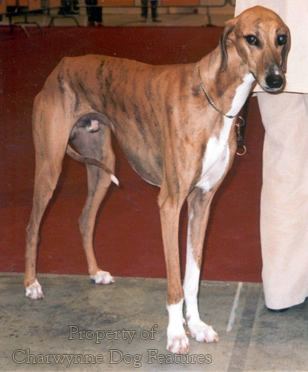

Those who criticise breed standards however have plenty of ammunition. Breed standards often lack precision, contain ambiguities and all too often use words which project no clear image in the mind. I defy anyone to identify an Azawakh from a smooth Saluki or a Sloughi on their respective breed standards alone. The standard of the Field Spaniel uses the word 'moderate' five times but it can surely be interpreted differently by each reader. This particular breed is expected to feature: 'wide open eyes', a muzzle 'in profile curving gradually from nose to throat' and 'slightly raised eyebrows'. Try drawing a dog with those attributes!
Words too can lose their meaning over the years. The Victorians often used the word 'awful' when they meant 'awesome'; we see a huge difference between the two nowadays. A similar situation exists with sporting expressions: few trainers today talk of 'breaking' a gundog. In breed descriptions some phrases have been overtaken by time. The Border Terrier is required , under its breed 'characteristics', to be 'capable of following a horse'. In the early part of the last century this meant accompanying mounted huntsmen, but is that apparent to an urban dwelling fancier of today?
The Beagle is expected in its breed standard to be 'any recognised hound colour other than liver'. A Greyhound however can be black, white, red, blue, fawn, fallow, brindle or any of these colours broken with white. Have you ever seen a Beagle in those 'recognised hound colours'? The Bullmastiff is required to carry its tail straight or curved but not hound-fashion. Which hound do they have in mind? The Elkhound has a tightly-curled tail; the Pharaoh Hound must carry its tail high, when in action; the tail of the Irish Wolfhound has to be carried low. Which hound breed does the Bullmastiff standard have in mind?
Details...details, what does it matter? It matters little to an experienced sportsman or dog man who has kept his favourite breed all his life and knows precisely what he expects to see in his chosen breed. It matters little to a rough-shooter if his Cocker has a 'cleanly chiselled' skull or to a wildfowler if his Lab has a 'perfect, regular and complete scissor bite', as their respective standards decree. But when the show fraternity, with easier access to the Kennel Club for their breed clubs, introduce changes that affect the appearance of a breed, then breed lovers should take note.
Do we really want white Golden and Labrador Retrievers? The breed standard of the former was changed so that the lighter coat colour was admissible. A light-golden is fair enough, no pun intended, but white? I see Goldens that look like Maremma Sheepdogs and it is not honest or true to origin. It is simply not typical and, as with white coated Labs, usually accompanied by a coat of the wrong texture for weatherproofing. That much-admired British terrier breed the Bull Terrier is now expected to have an egg-shaped head; its original breed standard demanded no such thing. Dog men need to be vigilant or their breeds can be changed without their realising.
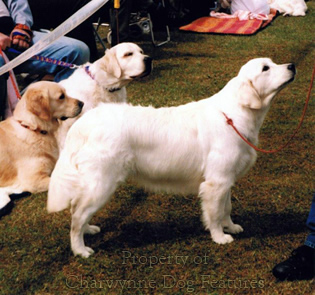
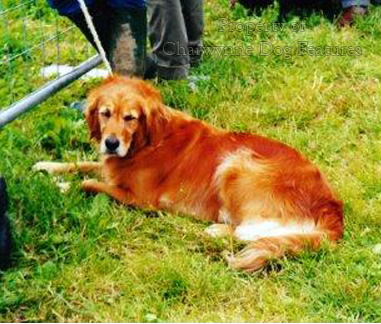
In recent years I have been involved in producing new breed standards for emergent breeds, like the Sporting Lucas Terrier and the Victorian Bulldog. I strove to construct a word picture which bestowed a working physique on these admirable breeds. The terrier club concerned happily accepted its proposed standard; I believe the new Bulldog club is still arguing about jaw length! That is the danger, seeking perfect phraseology when there can be no such thing in this context. In the Army, there's a disparaging comment to be made about those souls who prefer punctilious and time-consuming discussion to progress: 'Oh! They'd never get over the start line!' All disagreements need a measure of compromise if forward movement is truly desired.
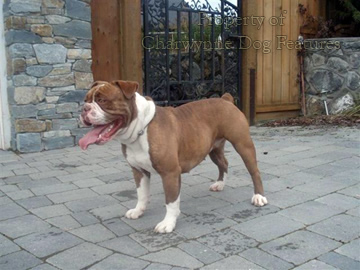
If you look at the Kennel Club's approved standard for the Bulldog then you are looking at a masterpiece of minced words, a minefield for pedants, a blueprint for the Tower of Pisa. The KC Bulldog's ears have to be, for example, 'as high and as far from eyes as possible' and 'folding inwards back, upper or front inner edge curving outwards and backwards...' No wonder Bulldogs have ear troubles! Small wonder that, away from the show ring, the value of breed standards is questioned. Sadly we do need to be able to tell a French Bulldog from an American Bulldog, and, in time, a KC Bulldog from a Victorian one. If a dodgy dog dealer tries to sell you a Bandogge or an Alaunt, don't ever attempt to sue him under The Trades Descriptions Act! You'll need a description of them first.
A year or two ago, encouraged by a magazine editor (Countryman's Weekly), I produced a breed standard for the Working English Springer Spaniel (published in the 4th Feb 2000 issue) and the Working Labrador Retriever (published in the 17th Mar 2000 issue). This was a well-intentioned attempt to contribute to the working dog scene with words aimed at safeguarding working physiques in our two most popular gundog breeds. Unless we give our attention to such a matter, we could end up with the Kennel Club doing a 'Clumber' on us. The KC breed standard for the Clumber Spaniel now stipulates an ideal weight of 80lbs, legitimized in the 1986 revision of the standard. The Working Clumber Spaniel Society does not support this increase in weight, considering it far from ideal.
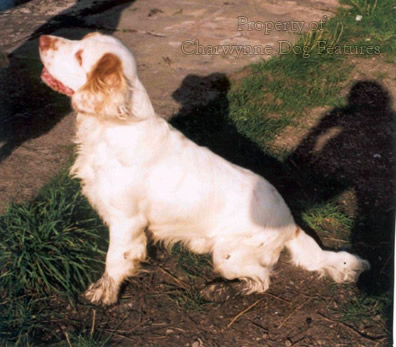
A Sussex Spaniel is expected to weigh around 50lbs; a Field Spaniel between 40 and 55lbs; a Cocker Spaniel between 28 and 32lbs. In his The Illustrated Book of the Dog of 1879, Vero Shaw recorded on the Clumber: "Weight for dogs varies from 57 to 65lbs., but the bitches run much lighter, the heaviest I ever saw scaled being my own Libnah, and she pulled down 50lbs." The Pointer man Arkwright's Lapis, considered higher at the shoulder than many in the breed, weighed in at 62lbs in 1888. Why should a breed of sporting spaniel need to gain a stone in weight in a century? What will their weight be in a century's time? In her book The Truth About Sporting Dogs, Pelham Books 1972, Bede Maxwell wrote on the Clumber that they can: "generally protect themselves against their enemies, but Heaven preserve them from their friends." Well put!
Shooting men who favour spaniels and have capable working Cockers or Springers can be forgiven for ignoring the minor breeds and just enjoying their sport with their dogs. But in a wider context: the conservation of our native breeds of dog and the preservation of our remarkable canine inheritance really does matter. A working dog registry committed to breed standards with the purpose of perpetuating field ability cannot come a day too soon. The Kennel Club needs respect and has to demonstrate authority but both have to be earned. Registrations provide their main income and they have a duty of custodianship as well as the profit motive. Step forward please a pet food manufacturer with vision - and a business plan!